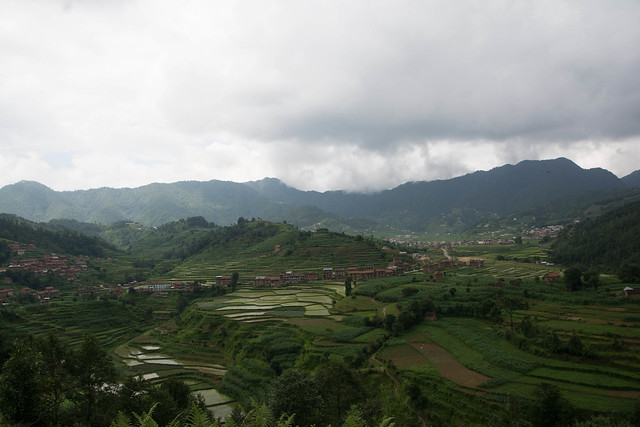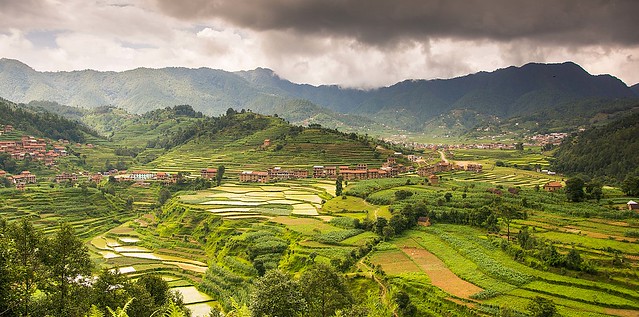This photo is edited!
“This photo is edited!”, “Did you make any changes to the original?”, “The photo should be termed fake since you used Photoshop!”, “I appreciate truth more than illusion”! Yes, my friends sound like philosophers, activists, and art connoisseurs! I want to use this blog post to answer their questions. The answer may not satisfy the people who raise those questions, but this post is an effort to make people aware of my perception of the genre of photography I am into.
I am not a journalist, a reporter, or a documentary photographer though I admire all of them. My interest in photography is, to a large extent, limited to capturing the beauty of the interactions between humans and their surrounding environment. Ideally, I want to be a photographer who captures the dialectic nature of human-environment relationship – the way humans alter their surroundings and how those surroundings respond back to that change. But for now, all I am doing is, having fun with light! I am very new to photography and I am figuring out what type of images drive me! I will not be a great photographer, but my effort put into learning photography will help me appreciate what goes into creating good pictures! (if you want to know the answer, it is money!)
Photography is an art. Just as an artist chooses the type of paper, color, brush, texture, perspective, and the subject, photographers also make decisions on the type of lens, focal length, aperture, shutter speed, composition, light, and subjects. To print a photograph in colour or black and white is also a conscious choice! Photographers have to manipulate different elements of photography, blend the science and art of photography to evoke the emotions they felt when they witnessed the scene! Yes, photographers are selective. They want to show the world what moves them. Since a photograph is usually viewed in the absence of the photographers, it is very essential for the photographers to guide the viewers to the message in the photograph. Many a times, the message may not carry the same intensity that the photographer felt! When the valley is viewed from the mountain top, the sheer energy it takes to climb the mountain adds to the experience. The exhaustion is not easy to factor into the gorgeousness of the photograph!
Part of the novelty comes from introducing a different light, increasing the vibrancy of colours, changing the point of view! Instagram is a success because it introduces elements that make us nostalgic! The deliberate distortion of the reality, if we may call it so, is part of the real deal! Ansel Adams introduced new printing techniques to create better photographs which have not been termed fake or misrepresentation of reality! Light whacking, light leaks, lens flares and tilt shifting are hardware based, with software alternatives, light manipulation setups to create novel photographs. Wide angle lenses, telephoto lenses, macro lenses, fish-eye and almost every lens other than a 50mm prime lens should be discouraged if photography is all about depicting reality! Even then, a camera will not be able to capture the reality, the objective truth we are seeking – the pursuit is so esoteric that a camera, a photograph or the photographer will not be able to complete it!
Almost all of my photographs are post-processed using Lightroom, Photoshop, or Photmatix (only for HDRs), sometimes a combination of these tools. I will continue to use these post-processing tools as they will help me correct the limitations of cameras and also apply my creative thinking, however primitive it could be! Photography, according to me, is quasi-discursive! Just as we choose a set of facts to construct a story that appeals to different people, photographers use a set of tools to construct a reality (yes, we all construct realities that suit us, realities that help us defend our behaviours and personalities!) seen through their lens and mind. Even documentary photographers cannot be objective. What they frame and don’t frame is very subjective, and for many, this choice of framing can be obfuscation of truth!
Part of the inspiration and substance to my understanding and belief in post-processing of photo comes from David DuChemin’s book – “Vision and Voice”. I love the introduction where the author says:
We’ve grown up being fed the lie that the camera never lies. So if “the camera never lies,” is our starting point for objectivity that any manipulation of the negative can only introduce corruption into the process? But that’s the problem, isn’t it? The camera tells any lie we ask of it. Or any truth, for that matter. It’s a tool, no more objective, really, than a microphone. Wielded by Martin Luther King, Jr., it’s a tool of truth and justice; wielded by a corrupt politician, it’s a tool of spin and propaganda. A tool. No more. No less.
The deeper my forays into digital photography, the more I am sure that there are three images that make a final photograph: the one you envision, the one you shoot, and the one you develop.
The complete introduction can be read on Amazon’s website. Click on “Look Inside” icon and scroll down to “Introduction”
Here is a photo my friend took:
And here is my post-processed version of the photo:



No Comments